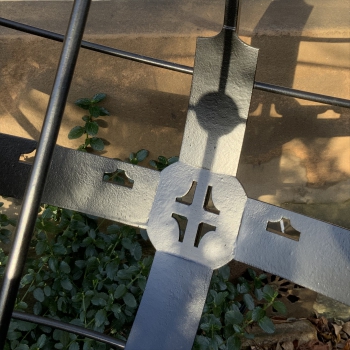
The shadow of the ball on the sundial follows the sun all year round. The sun is low in the sky in winter, and it reaches its lowest point at the Winter Solstice on 21st December. This photo is one month later on 20th January. The sun is already higher in the sky, and the ball’s shadow has moved down.
Sundials catch a shadow from the sun. It is such a simple idea. The shadow on the sundial shows the sun’s position in the sky and the sundial reads it out as time, usually the time of day and often the time of year as well. Our armillary sundial is a special one with two balls that give the time of the year measured by the height of their shadow at noon. One ball casts a shadow in the winter months and the other one in summer.
In the photo it is one month on from the winter solstice when the sun is low in the sky. Already the sun has started climbing higher and the shadow of the ball has moved down. This will continue until spring has officially arrived at the equinox, and the shadow of the other ball takes over. It is an intriguing sequence.
The pattern of the sun’s height is precise and predictable throughout the year. By 20th January the sun rises only 3° above its low point at winter solstice. One month later it is half way to the equinox, and in one month more it is all the way back to the start of spring again. The pattern is an endless cycle of the sun moving slowly then faster, and then the other way, which is all captured by our armillary sundial.
